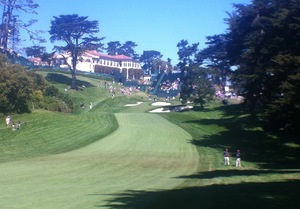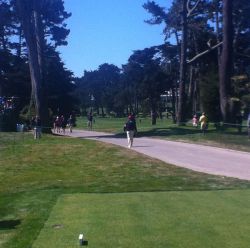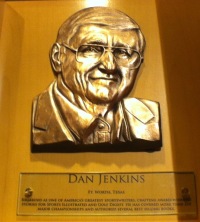When putting together pools and picks for the 112th U.S. Open I tend to look at past performances on golf courses, yet with so few in this week's field having played at Olympic Club in 1998, I would take a look at how this golf course plays. And more than most courses, Olympic seems to emphasize ball-striking to an extreme, strategic thinking less so.
 "You have to curve it more off the tees here than any other golf course that we play," Tiger Woods said Tuesday.
"You have to curve it more off the tees here than any other golf course that we play," Tiger Woods said Tuesday.
On paper, the tee shots look like a pretty even breakdown between needing to play a right-to-left shot, left-to-right shot and a dead-straight-to-not-hit-overhanging-limbs shot.
"There was no preference on either shot," Billy Casper said today of the course in '66 and today. "Because you had so many holes that had doglegs right, you had so many holes that you had doglegs left and you had so many holes where the fairway sloped from right‑to‑left and holes where you had the fairway slope from left‑to‑right. It required good stroke making to be able to play the golf course."
However, approach shots at Olympic Club tend to favor a left-to-right shot either because of green angles or the combination of fairway slope, green size and green firmness.
"Even to the greens, you've got right‑to‑left slopes of, let's say right‑to‑left slopes of fairways and greens, and you have to cut it, so you're going against the grain."
This is why I continue to feel like Tiger is an overwhelming favorite. Throw in the lack of driver holes, his preference for bent over poa greens, strong fan support in this area, a familiarity with California golf and a continuation of the predominantly left-to-right ball striking on display two weeks ago at the Memorial, and you have a deserving favorite.
And Tiger the little-known historian seems to have done his homework on this front.
"I was reading something a long time ago about Arnold playing this event," he said Tuesday. "He likes to draw the ball. But he learned how to hit a cut just for this event."
Who else works the ball left to right? Phil Mickelson, Tiger's playing partner the first two days, can certainly do so and should Lee Westwood, who once tried to change his swing to hit a draw but has wisely gone back to a fade shot shape, leaps out as someone who should thrive here.
But this is Olympic. And history tells us there's another less famous, supreme ball-striking, cut-shot artist out there who will spoil the affair. But who?
 And I have to agree with this design assessment, something you can see in a video shot earlier today.
And I have to agree with this design assessment, something you can see in a video shot earlier today.















